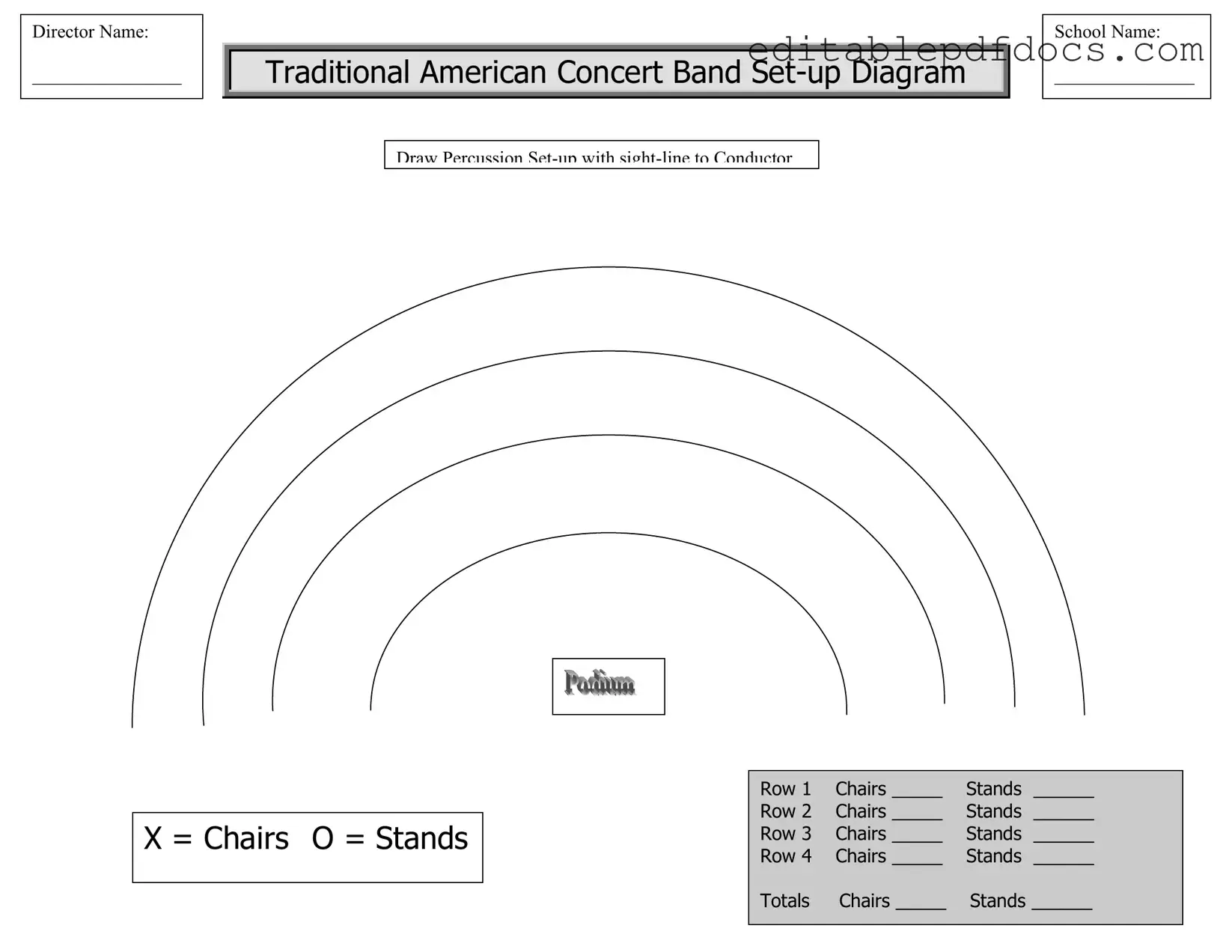Filling out the Band Seating Chart form can be straightforward, but many people make common mistakes that can lead to confusion. One frequent error is failing to provide the director's name or the school name. These details are essential for proper identification and coordination, so it’s important to ensure that they are clearly written at the top of the form.
Another mistake often seen is not accurately counting the number of chairs and stands for each row. Each row has designated spaces for both chairs and stands, and it’s crucial to fill in these numbers correctly. For example, if Row 1 is supposed to have 6 chairs and 3 stands, double-check that these totals are entered without any errors. Incorrect totals can affect the overall setup.
Many individuals also overlook the percussion setup. The form specifies that percussion instruments must stay in the basic setup as shown. Ignoring this requirement can lead to logistical issues during the performance, as the stage crew will not be able to adjust the percussion layout as needed.
Another common oversight is neglecting to submit the form by the deadline. The instructions clearly state that the form must be faxed prior to March 1, 2008. Late submissions can result in a lack of preparation and potentially disrupt the concert experience for both performers and audience members.
Additionally, some people forget to provide the performance date and time. This information is crucial for scheduling and logistical planning. Without these details, it becomes challenging for the stage crew to prepare adequately for the event.
Lastly, failing to draw the percussion setup with a sight-line to the conductor can lead to performance issues. The seating arrangement should allow all musicians, especially percussionists, to see the conductor clearly. This is vital for maintaining synchronization during the performance. Taking the time to ensure this aspect is correctly addressed can enhance the overall performance quality.
